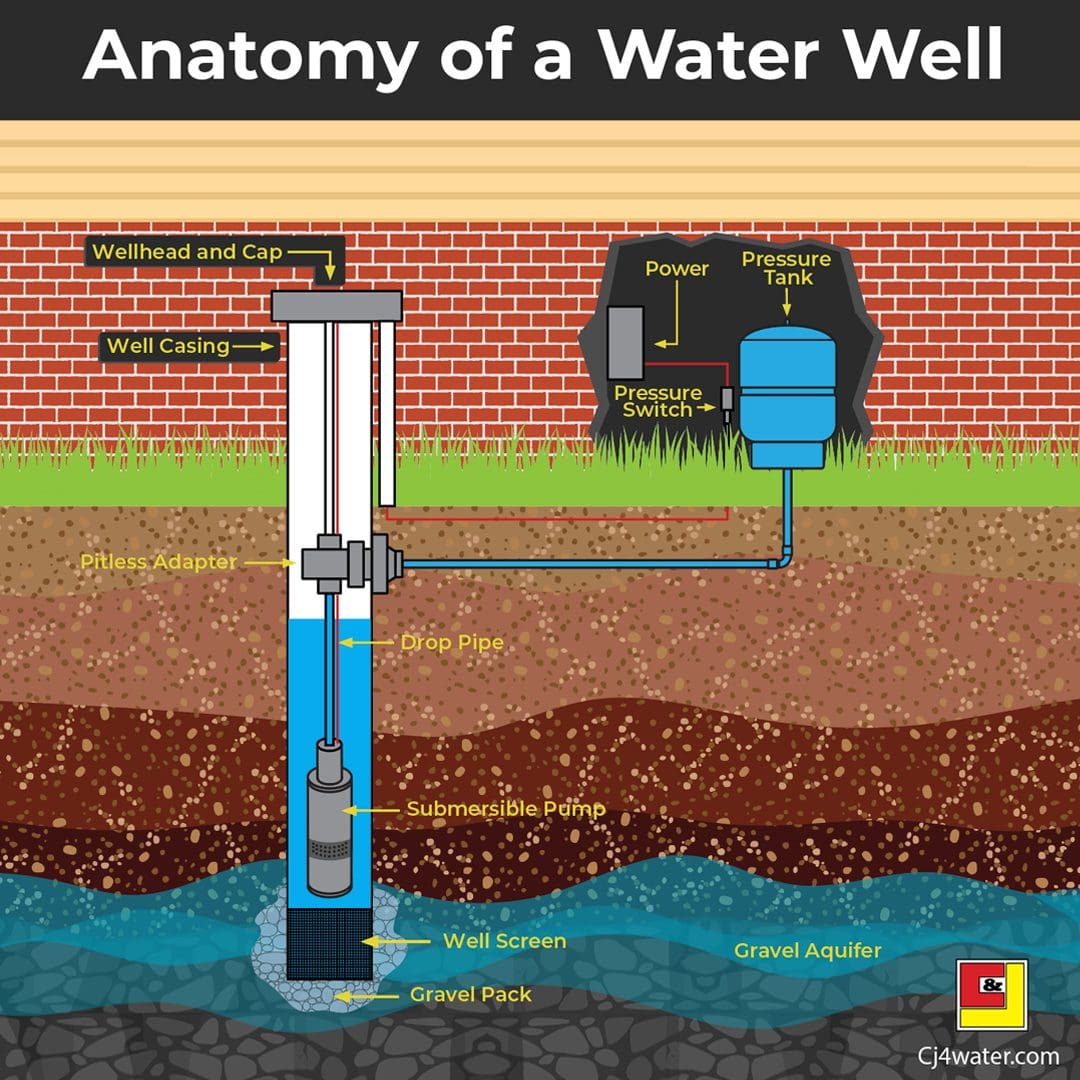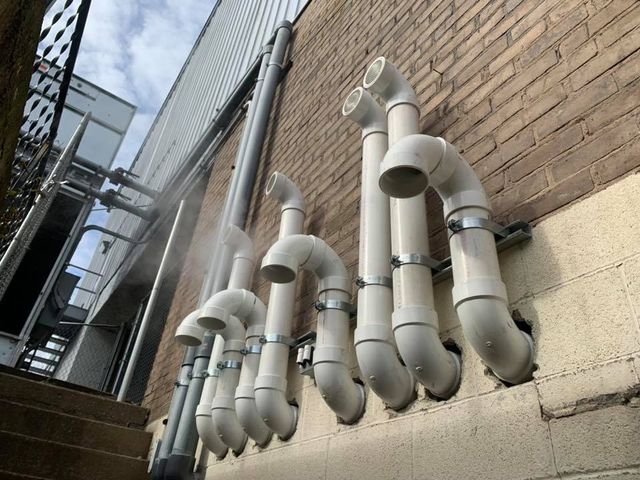The Design of Your Home's Plumbing System Explained
The Design of Your Home's Plumbing System Explained
Blog Article
We've noticed this post on Understanding Your Home's Plumbing Anatomy directly below on the web and reckoned it made perfect sense to write about it with you in this article.

Understanding exactly how your home's pipes system functions is important for each home owner. From supplying clean water for drinking, food preparation, and showering to securely removing wastewater, a well-kept pipes system is crucial for your household's wellness and comfort. In this thorough overview, we'll explore the detailed network that makes up your home's plumbing and deal pointers on upkeep, upgrades, and dealing with typical concerns.
Intro
Your home's plumbing system is more than just a network of pipes; it's an intricate system that guarantees you have accessibility to clean water and efficient wastewater removal. Understanding its parts and exactly how they collaborate can assist you stop pricey repairs and guarantee whatever runs smoothly.
Fundamental Parts of a Pipes System
Pipelines and Tubes
At the heart of your pipes system are the pipelines and tubing that bring water throughout your home. These can be made of numerous products such as copper, PVC, or PEX, each with its benefits in regards to sturdiness and cost-effectiveness.
Fixtures: Sinks, Toilets, Showers, and so on.
Components like sinks, commodes, showers, and bath tubs are where water is made use of in your house. Recognizing just how these components attach to the pipes system aids in detecting troubles and intending upgrades.
Valves and Shut-off Points
Shutoffs manage the circulation of water in your plumbing system. Shut-off shutoffs are crucial throughout emergency situations or when you require to make fixings, permitting you to separate parts of the system without interrupting water flow to the entire house.
Supply Of Water System
Main Water Line
The main water line attaches your home to the local water system or a personal well. It's where water enters your home and is distributed to various fixtures.
Water Meter and Pressure Regulatory Authority
The water meter procedures your water use, while a pressure regulator ensures that water moves at a secure stress throughout your home's plumbing system, preventing damage to pipelines and components.
Cold Water vs. Hot Water Lines
Understanding the difference in between cold water lines, which supply water directly from the major, and warm water lines, which bring heated water from the hot water heater, assists in fixing and planning for upgrades.
Water drainage System
Drain Pipes Pipeline and Traps
Drain pipes lug wastewater away from sinks, showers, and toilets to the sewage system or septic system. Traps prevent sewage system gases from entering your home and likewise trap particles that might cause obstructions.
Ventilation Pipes
Air flow pipes allow air into the drainage system, preventing suction that can reduce drain and trigger traps to vacant. Correct air flow is necessary for preserving the integrity of your plumbing system.
Relevance of Correct Drainage
Ensuring correct drainage prevents backups and water damage. Routinely cleaning drains and maintaining catches can protect against pricey repair work and expand the life of your pipes system.
Water Heating Unit
Sorts Of Water Heaters
Hot water heater can be tankless or traditional tank-style. Tankless heating systems heat water as needed, while tanks keep warmed water for instant usage.
How Water Heaters Attach to the Plumbing System
Understanding just how water heaters attach to both the cold water supply and warm water distribution lines aids in identifying issues like inadequate hot water or leaks.
Upkeep Tips for Water Heaters
On a regular basis purging your hot water heater to get rid of sediment, checking the temperature settings, and evaluating for leaks can prolong its life-span and improve power efficiency.
Typical Plumbing Problems
Leakages and Their Causes
Leaks can take place due to aging pipes, loose fittings, or high water stress. Attending to leakages without delay protects against water damages and mold and mildew growth.
Blockages and Obstructions
Obstructions in drains and toilets are typically brought on by purging non-flushable items or a buildup of grease and hair. Using drain displays and bearing in mind what drops your drains pipes can protect against obstructions.
Indicators of Pipes Issues to Look For
Low water pressure, slow drains, foul odors, or unusually high water bills are indicators of possible pipes troubles that must be attended to quickly.
Plumbing Maintenance Tips
Regular Inspections and Checks
Set up yearly plumbing evaluations to catch concerns early. Seek indicators of leaks, deterioration, or mineral build-up in faucets and showerheads.
DIY Maintenance Tasks
Straightforward tasks like cleaning tap aerators, looking for bathroom leaks using color tablet computers, or insulating exposed pipelines in chilly climates can prevent significant pipes problems.
When to Call a Professional Plumber
Know when a pipes problem requires specialist know-how. Attempting complex fixings without appropriate knowledge can bring about even more damage and greater repair expenses.
Updating Your Pipes System
Reasons for Upgrading
Updating to water-efficient components or replacing old pipes can enhance water top quality, reduce water bills, and boost the worth of your home.
Modern Pipes Technologies and Their Benefits
Explore innovations like clever leak detectors, water-saving bathrooms, and energy-efficient hot water heater that can save cash and reduce environmental influence.
Expense Considerations and ROI
Compute the upfront prices versus long-term financial savings when taking into consideration pipes upgrades. Numerous upgrades spend for themselves through lowered utility expenses and fewer repair services.
Environmental Effect and Preservation
Water-Saving Fixtures and Devices
Setting up low-flow taps, showerheads, and toilets can substantially reduce water use without sacrificing performance.
Tips for Lowering Water Usage
Basic habits like repairing leakages quickly, taking much shorter showers, and running complete loads of laundry and meals can conserve water and lower your energy bills.
Eco-Friendly Plumbing Options
Take into consideration sustainable plumbing products like bamboo for flooring, which is durable and environmentally friendly, or recycled glass for counter tops.
Emergency situation Preparedness
Steps to Take Throughout a Plumbing Emergency
Know where your shut-off valves are located and exactly how to switch off the supply of water in case of a ruptured pipeline or significant leak.
Significance of Having Emergency Situation Contacts Useful
Maintain call details for local plumbing technicians or emergency services easily offered for fast response during a plumbing dilemma.
Do It Yourself Emergency Situation Fixes (When Applicable).
Short-term repairs like utilizing air duct tape to spot a dripping pipe or placing a container under a leaking tap can decrease damages till a professional plumbing shows up.
Final thought.
Comprehending the makeup of your home's plumbing system empowers you to keep it efficiently, conserving money and time on repair work. By adhering to routine maintenance regimens and remaining informed concerning contemporary plumbing technologies, you can guarantee your plumbing system operates effectively for years ahead.
Exploring Your Homes Plumbing Anatomy
Water Supply System
Main Water Line: This is where water enters your home from the municipal supply or a private well.
Water Meter: Typically located near where the main water line enters the property, it measures the amount of water used.
Shutoff Valve: It s crucial to know where this is in case of emergencies. It allows you to turn off the water supply to the entire house.
Pipes and Fittings: These distribute water throughout your home. Materials can include copper, PVC, or PEX.
Drain-Waste-Vent (DWV) System
Drains: Located in sinks, showers, and tubs, these carry wastewater away.
Traps: U-shaped pipes under sinks that hold standing water, blocking sewer gases from entering the home.
Vents: Pipes that lead from the DWV system to the outside, preventing vacuum formation and allowing gases to escape.
Sewer Line: Carries all wastewater from the home to the municipal sewer system or a septic tank.
Fixtures and Appliances
Sinks, Toilets, and Showers
Dishwashers and Washing Machines
Water Heaters
Maintenance Tips
Regularly check for leaks in exposed pipes and around fixtures.
Inspect the water heater annually for signs of wear.
Clean drains and traps to prevent clogs and odors.
Know how to shut off water to individual fixtures.
When to Call a Professional
Major leaks or burst pipes
Installation of new pipes or fixtures
Septic tank issues
Remodeling projects that involve plumbing changes
Conclusion
Understanding the anatomy of your home's plumbing is key to maintaining a functional and efficient system. Regular checks and knowing when to call in the experts can save you time, money, and stress.
https://www.mavyn.com/blog/exploring-your-homes-plumbing-anatomy

Exploring Your Homes Plumbing Anatomy
Water Supply System
Drain-Waste-Vent (DWV) System
Fixtures and Appliances
Maintenance Tips
When to Call a Professional
Conclusion
Understanding the anatomy of your home's plumbing is key to maintaining a functional and efficient system. Regular checks and knowing when to call in the experts can save you time, money, and stress.
https://www.mavyn.com/blog/exploring-your-homes-plumbing-anatomy
Hopefully you enjoyed our part on . Thank you so much for taking a few minutes to read our blog post. If you liked our article plz do not forget to share it. We treasure reading our article about Plumbing Installation 101: All You Need to Know.
Go Company Report this page